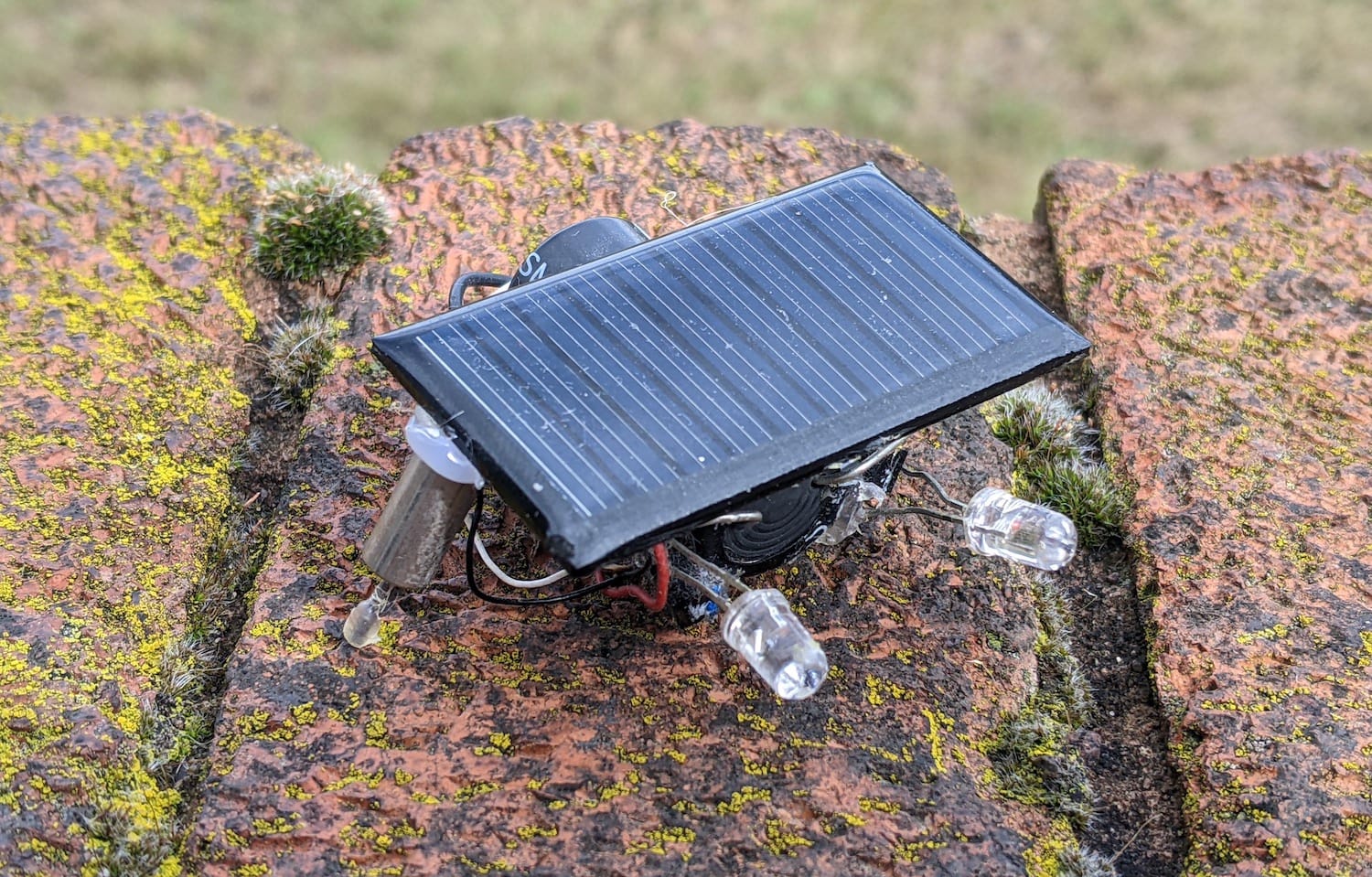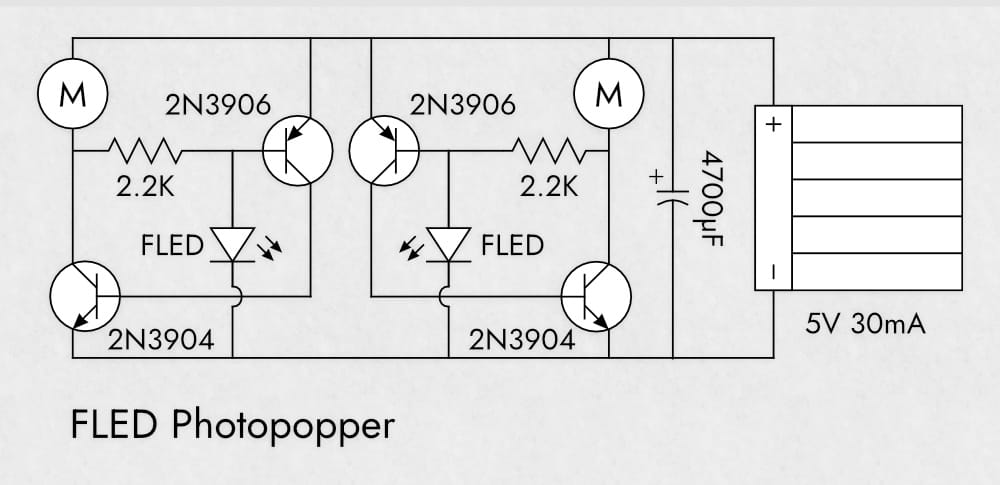My first foray into the world of BEAM bots (and electronics in general) ended in this little monstrosity. It uses the simplest solar engine there is: the FLED-based solar engine, named such because it exploits the properties of flashing LEDs to do its thing. It has two engines, one for each motor.

A solar engine is at the heart of most BEAM robots. It stores up the incoming trickle of energy from the solar panel until a threshold is met, then releases it in usable bursts. Most solar engines determine when to dump the power by watching the voltage level of the capacitor. When it's high enough to trip the circuit, the stored energy gets dumped into the motor.
This is where the flashing LED comes in. Unlike a normal LED, a FLED contains a tiny built-in circuit that needs a minimum voltage to activate and start conducting. Only when there's enough power stored in the capacitor does the FLED light, activating the circuit and releasing the energy.
FLEDs have another trick up their sleeve - they're sensitive to light! This means a FLED in sunlight needs a slightly higher voltage to trigger. In a photopopper (which uses two solar engines, one mounted on each side), the side receiving less light fires first, causing the robot to turn towards the brighter side.
Unfortunately, in bright light this solar engine tends to go into high-frequency oscillation and lock up, emitting a high-pitched shriek. One way to mitigate this is to partially shield the FLEDs with black tape or heat-shrink tubing.
While being easy to build, this circuit isn't very efficient and can be a bit fussy about which motor is used. I later tried an improved version here.
